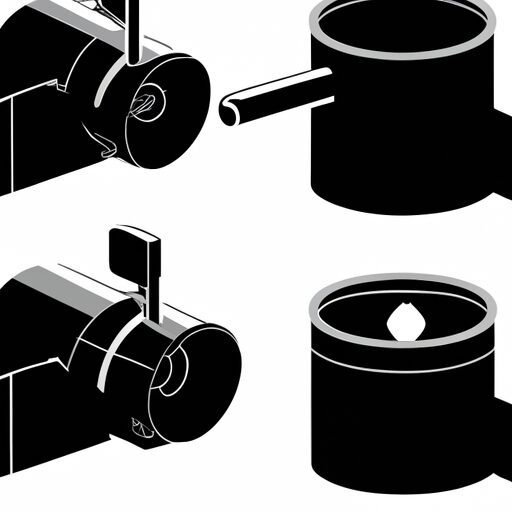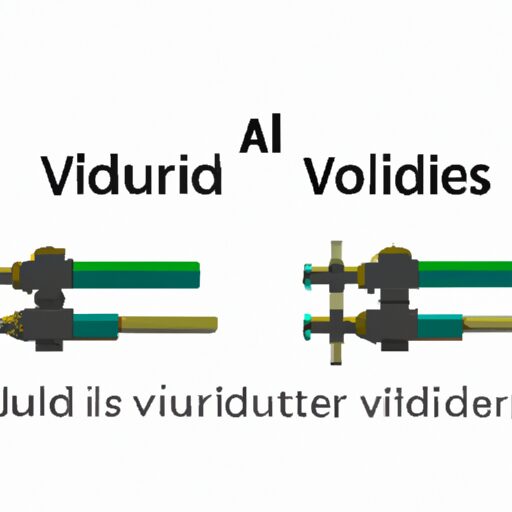Hydraulic Fluid Classification: The Ultimate Guide to Understanding Types and Performance
Hydraulic fluid is classified based on its viscosity, additives, and compatibility with hydraulic system materials. It plays a critical role in hydraulic systems to transmit power and lubricate moving parts.
The classification helps determine the appropriate fluid for specific applications and ensures optimal performance and longevity of hydraulic systems. By considering various factors such as temperature, pressure, and system requirements, hydraulic fluid can be categorized into different classes or types, such as mineral oil, synthetic, and water-based fluids, each with their unique properties and benefits.
Understanding the classification of hydraulic fluid is essential for maintaining hydraulic systems and ensuring their efficient operation.

Credit: store.lci1.com
Introduction To Hydraulic Fluids
Hydraulic fluid classification plays a crucial role in the effective functioning of hydraulic systems. Understanding the different types of hydraulic fluids ensures optimal performance and longevity of the equipment.
Hydraulic systems are widely used in various industries and applications, playing a crucial role in the smooth functioning of machinery. At the heart of these systems lies hydraulic fluid, a vital component that enables the transmission of power and ensures optimal performance.
In this section, we will delve into the definition and importance of hydraulic fluids, as well as explore their functions and characteristics.
Definition And Importance Of Hydraulic Fluids
Hydraulic fluids can be defined as specially formulated liquids that are used to transmit power in hydraulic systems. These fluids are designed to provide lubrication, reduce friction, and enable efficient energy transfer within the system. The proper selection and maintenance of hydraulic fluids are essential for the smooth operation and longevity of hydraulic equipment.
Bullet points:
- Hydraulic fluids are essential components of hydraulic systems, responsible for transmitting power.
- They provide lubrication and reduce friction between moving parts.
- Proper selection and maintenance of hydraulic fluids are crucial for the longevity and efficiency of hydraulic equipment.
Functions And Characteristics Of Hydraulic Fluids
Hydraulic fluids serve a range of functions within hydraulic systems, each contributing to the overall performance and reliability of the system. Understanding these functions can provide valuable insights into the importance of using the correct hydraulic fluid for specific applications.
Bullet points:
- Transmitting power: Hydraulic fluids enable the transfer of power from the hydraulic pump to the actuators, allowing for the controlled movement of hydraulic machinery.
- Lubrication: Hydraulic fluids minimize friction and wear between moving parts, preventing damage and extending the lifespan of components.
- Heat dissipation: The circulation of hydraulic fluid helps dissipate heat generated during operation, maintaining optimal working temperatures and preventing overheating.
- Contamination control: Hydraulic fluids act as a medium for suspending contaminants and particles, preventing them from clogging the system or causing damage to sensitive components.
- Sealing and corrosion prevention: Hydraulic fluids can provide a protective barrier against corrosion and ensure proper sealing between components, reducing the risk of leaks and maintaining system integrity.
Hydraulic fluids play a critical role in the operation and performance of hydraulic systems. Through their lubrication, heat dissipation, and contamination control properties, these fluids enable smooth power transmission and ensure the longevity of hydraulic equipment. Selecting the appropriate hydraulic fluid and performing regular maintenance are essential for maintaining the efficiency and reliability of hydraulic systems.
Types Of Hydraulic Fluids
Hydraulic fluid classification categorizes various types of fluids used in hydraulic systems. These fluids are classified based on their composition, viscosity, and performance characteristics, ensuring optimal functionality and protection for hydraulic machinery.
Hydraulic Fluid Classification
Hydraulic fluid, a crucial component in hydraulic systems, plays a vital role in transferring power within the machinery. Understanding the different types of hydraulic fluids can help ensure proper functioning and maintenance of hydraulic systems. In this section, we will explore three main categories of hydraulic fluids: mineral oil-based fluids, synthetic fluids, and biodegradable fluids.
Mineral Oil-Based Fluids
Mineral oil-based fluids are the most commonly used type of hydraulic fluids. They are derived from crude oil and offer excellent lubricating properties. Here are the properties and applications of mineral oil-based fluids:
- Properties:
- High viscosity index: Mineral oil-based fluids maintain their performance over a wide range of temperatures, ensuring consistent operation in various environments.
- Excellent lubrication: These fluids reduce friction and wear between moving components, extending the lifespan of hydraulic systems.
- Good thermal stability: Mineral oil-based fluids have the ability to dissipate heat efficiently, preventing system overheating.
- Applications:
- Industrial machinery: Mineral oil-based fluids are widely used in hydraulic systems found in manufacturing plants, construction equipment, and agricultural machinery.
- Automotive: These fluids are utilized in automotive hydraulic systems such as power steering and brake systems.
Despite their widespread usage, mineral oil-based fluids have both advantages and disadvantages.
Advantages And Disadvantages
Advantages:
- Cost-effective: Mineral oil-based fluids are relatively cheaper compared to other types, making them a preferred choice for many applications.
- Wide availability: These fluids are readily available in the market, with various formulations catering to specific requirements.
- Compatibility: Mineral oil-based fluids are compatible with most hydraulic seals and materials commonly used in hydraulic systems.
Disadvantages:
- Environmental impact: Mineral oil-based fluids are non-biodegradable and can pose a threat to the ecosystem if not properly handled.
- Limited temperature range: They may not perform optimally under extreme temperatures, leading to potential viscosity issues.
- Vulnerability to oxidation: Over time, mineral oil-based fluids can degrade due to oxidation, reducing their effectiveness and potentially damaging system components.
Synthetic Fluids
Synthetic hydraulic fluids are formulated using synthetic base stocks and additives. These fluids offer enhanced performance and are often used in specialized applications. Let’s explore the types, composition, and benefits of synthetic fluids:
- Types and Composition:
- Polyalphaolefin (PAO): PAO-based fluids are highly stable at high temperatures and provide excellent viscosity control.
- Polyglycol (PAG): PAG-based fluids offer superior lubrication and are commonly used in applications where fire resistance is required.
- Phosphate esters: These fluids have excellent fire resistance properties and are used in demanding applications such as aircraft hydraulic systems.
- Performance Benefits and Applications:
- Improved temperature resistance: Synthetic fluids offer better viscosity control at high and low temperatures, ensuring optimal system performance in extreme conditions.
- Enhanced wear protection: These fluids provide superior lubrication, reducing friction and wear on system components.
- Fire resistance: Certain synthetic fluids, such as phosphate esters, have high fire resistance properties, making them suitable for critical applications in the aerospace industry.
Biodegradable Hydraulic Fluids
As the focus on environmental sustainability grows, the use of biodegradable hydraulic fluids has gained prominence. These fluids are formulated using renewable resources and have a reduced impact on the environment. Let’s explore the environmental benefits, applications, and limitations of biodegradable fluids:
- Environmental Benefits and Applications:
- Biodegradability: Biodegradable fluids break down naturally, reducing the risk of pollution and protecting aquatic life.
- Compliance with regulations: These fluids often meet or exceed stringent environmental regulations, making them ideal for environmentally sensitive areas.
- Applications: Biodegradable fluids are commonly used in marine applications, forestry equipment, and environmentally sensitive industries.
- Limitations and Considerations:
- Limited temperature range: Biodegradable fluids may have temperature limitations, requiring careful consideration in extreme conditions.
- Compatibility with seals and materials: It is crucial to ensure that biodegradable fluids are compatible with the seals and materials used in the hydraulic system to prevent any potential issues.
By understanding the different types of hydraulic fluids available, their properties, and suitability for specific applications, you can make informed decisions to ensure optimal performance and environmental responsibility in your hydraulic systems.
Performance Standards And Classifications
Hydraulic fluid classification is essential for maintaining optimum performance standards in hydraulic systems. Understanding the different classification options and their specific characteristics is key to selecting the right fluid for efficient system operation and longevity. Whether it’s mineral-based, synthetic, or fire-resistant hydraulic fluid, proper classification ensures smooth hydraulic machinery operation.
Hydraulic Fluid Classification:
Hydraulic fluids play a crucial role in the functioning of hydraulic systems by providing the necessary power transfer and lubrication. However, it is essential to classify hydraulic fluids based on their performance standards and classifications to ensure compatibility and optimal system operation.
In this section, we will delve into the key ISO standards, ASTM standards, and OEM specifications that define hydraulic fluid classifications.
Iso Standards For Hydraulic Fluids
ISO standards are globally recognized benchmarks for various industrial sectors. When it comes to hydraulic fluids, two prominent ISO standards take precedence – ISO 11158 and ISO 6743-4. Here’s an overview of these standards:
- ISO 11158: This standard focuses on hydraulic fluid performance specifications, including viscosity grades and requirements for oxidation stability, corrosion protection, and water separation.
- ISO 6743-4: Targeting the classification of hydraulic oils, ISO 6743-4 categorizes fluids into various classes based on their expected application and recommends different characteristics for each class.
Implications of Different ISO Classes:
- Class H: Ideal for applications where fire-resistant fluids with low viscosity are necessary.
- Class HV: Designed for high-pressure hydraulic systems requiring viscosity grades that remain consistent under varying temperature conditions.
- Class HL: Suitable for applications where anti-wear hydraulic fluids with excellent corrosion resistance and stability are essential.
- Class HVLP: Recommended for low-pressure systems that experience high-temperature variations.
- Class HLPD: Developed for hydraulic systems operating at extreme temperatures and under heavy loads.
Astm Standards For Hydraulic Fluids
Apart from ISO standards, the American Society for Testing and Materials (ASTM) has its own set of standards for hydraulic fluids. Specifically, ASTM D6158 and ASTM D3427 carry significant importance. Let’s dive into these standards:
- ASTM D6158: This standard specifies the test methods and evaluation criteria for evaluating the oxidative stability and thermal stability of hydraulic fluids, ensuring their performance under stressful conditions.
- ASTM D3427: Primarily focusing on anti-wear hydraulic fluids, ASTM D3427 outlines the test procedures and performance requirements necessary for these fluids to demonstrate their compatibility with hydraulic systems.
Testing and Evaluation Methods:
The evaluation of hydraulic fluids is an integral part of the classification process. Several testing and evaluation methods are employed to determine the performance and compatibility of fluids, including:
- Viscosity measurement: Determines the fluid’s resistance to flow under specific conditions, a crucial factor in ensuring optimal system operation.
- Oxidation stability testing: Assesses the fluid’s resistance to oxidation, which can lead to corrosive byproducts and hinder system performance.
- Demulsibility testing: Determines the ability of the fluid to separate from water, a critical characteristic in systems exposed to moisture.
Oem Specifications For Hydraulic Fluids
Leading equipment manufacturers (OEMs) often specify their own requirements for hydraulic fluids to ensure optimal performance and longevity of their hydraulic systems. While these specifications may vary across manufacturers, common specifications include:
- Viscosity range: Manufacturers may specify a specific viscosity range based on their system design and operating conditions.
- Additive compatibility: Manufacturers may require fluids with specific additive packages to prevent component degradation or damage.
- Contamination control: OEM specifications often emphasize the need for cleanliness standards to avoid particle contamination and maintain system efficiency.
Compatibility and Recommendations:
When selecting hydraulic fluids, it is crucial to consider compatibility with the specific system components and ensure adherence to standards and specifications. Manufacturers typically provide recommendations on suitable fluids for their systems, taking into account performance, environmental, and safety requirements.
Hydraulic fluid classifications are determined by various performance standards and classifications, including ISO standards, ASTM standards, and OEM specifications. Understanding these classifications helps ensure the selection of the appropriate hydraulic fluid for optimal system operation and longevity.
Factors Affecting Hydraulic Fluid Performance
Factors that influence the performance of hydraulic fluids play a crucial role in their classification. These factors impact the fluid’s viscosity, wear protection, shear stability, and oxidation resistance, which determine its effectiveness in hydraulic systems. Understanding these factors is essential for selecting the right hydraulic fluid for optimal performance.
Hydraulic fluid performance plays a crucial role in the efficient functioning of hydraulic systems. Several factors influence the performance of hydraulic fluids. Understanding these factors is essential for maintaining optimal system operation and preventing potential risks. Let’s delve into the key considerations that impact hydraulic fluid performance:
Viscosity And Temperature Considerations
Viscosity refers to the fluid’s resistance to flow. It plays a vital role in ensuring proper lubrication, heat transfer, and overall system efficiency. Temperature greatly affects viscosity, and choosing the right hydraulic fluid viscosity grade is crucial for optimal system performance.
Here are some important points to consider:
- Impact of Temperature on Fluid Performance:
- As temperature increases, the viscosity of hydraulic fluids tends to decrease, affecting their ability to lubricate and protect system components.
- High temperatures may lead to thinning of the fluid and reduced film thickness, potentially causing increased wear and decreased performance.
- Conversely, low temperatures can result in increased fluid viscosity, leading to reduced flow and potential system damage due to cavitation.
- Viscosity Index and Importance in Different Conditions:
- The viscosity index (VI) is a measure of how much a hydraulic fluid’s viscosity changes with temperature variations.
- Fluids with a high VI exhibit minimal viscosity change, ensuring consistent performance across a wide temperature range.
- Choosing hydraulic fluids with appropriate viscosity index values is vital for maintaining operability in extreme temperature conditions.
Additives And Contamination Control
Apart from viscosity considerations, additives and contamination control are fundamental aspects in maintaining hydraulic fluid performance. Here’s what you need to know:
- Role of Additives in Enhancing Performance:
- Additives are incorporated into hydraulic fluids to improve their lubricity, oxidation resistance, anti-foaming properties, and overall performance.
- Anti-wear additives protect system components from metal-to-metal contact and reduce friction, extending the lifespan of hydraulic systems.
- Contamination Sources and Prevention Methods:
- Contaminants like dirt, water, and air can adversely affect hydraulic fluid performance.
- Proper filtration systems, regular fluid analysis, and adherence to cleanliness practices help prevent contamination and maintain fluid integrity.
Fluid Compatibility In Hydraulic Systems
Ensuring fluid compatibility with system components is paramount to avoid potential issues and optimize system operation. Here’s what you need to know about fluid compatibility:
- Interaction with Seals, Hoses, and Components:
- Hydraulic fluids can react differently with various materials used in hydraulic systems, such as seals, hoses, and other components.
- Compatibility issues can lead to seal deterioration, leakage, reduced performance, or even system failures.
- It is crucial to select hydraulic fluids that are compatible with the specific materials used in the system.
- Compatibility Issues and Potential Risks:
- Incompatible fluids can cause degradation, swelling, or hardening of seals and other components, leading to leaks or system malfunctions.
- Understanding fluid compatibility and selecting fluids accordingly ensures optimal performance and maximizes the lifespan of hydraulic systems.
By considering viscosity and temperature, additives and contamination control, and fluid compatibility, you can make informed decisions that enhance hydraulic fluid performance. Implementing the appropriate measures safeguards system efficiency, minimizes downtime, and maximizes the longevity of hydraulic equipment.
Choosing The Right Hydraulic Fluid
In hydraulic systems, choosing the right hydraulic fluid is crucial. Understanding hydraulic fluid classification helps ensure optimal performance and longevity of the system.
When it comes to hydraulic systems, selecting the appropriate hydraulic fluid is crucial. The right fluid not only ensures optimal performance but also extends the lifespan of the equipment. To make this decision, it’s important to consider various factors such as equipment requirements, system design and operating conditions, OEM recommendations and guidelines, as well as viscosity, temperature, and performance requirements.
Additionally, environmental considerations and regulations play a vital role, as does maintenance and fluid analysis. Let’s delve into each of these aspects to understand the importance of choosing the right hydraulic fluid:
Considering Equipment Requirements:
- Equipment specifications: Different hydraulic systems have specific requirements regarding the type of hydraulic fluid to be used. These specifications may include viscosity range, additives, and compatibility.
System Design And Operating Conditions:
- Operating pressure and temperature: Depending on the system’s design, the hydraulic fluid should have the appropriate viscosity to ensure smooth operation under various pressure and temperature conditions.
- Contamination control: The hydraulic fluid should be selected based on the system’s ability to capture and filter contaminants effectively, reducing the risk of equipment failures.
Oem Recommendations And Guidelines:
- Manufacturer guidelines: Original Equipment Manufacturers (OEMs) provide recommendations regarding the hydraulic fluids that are compatible with their equipment. Adhering to these guidelines ensures optimal performance and prevents potential warranty issues.
Factors To Evaluate In Hydraulic Fluid Selection:
- Viscosity requirements: It is crucial to select a hydraulic fluid with the right viscosity for the system. Viscosity directly affects the fluid’s ability to flow and lubricate, ensuring smooth operation of hydraulic components.
- Temperature range: Different hydraulic fluids have different temperature ranges in which they perform optimally. Consider the operating temperature range of the system and choose a fluid that can handle those conditions.
- Performance additives: Additives enhance the fluid’s performance and protect against wear, oxidation, and corrosion. Evaluating the required additive package for the hydraulic system is essential for maintaining long-term reliability.
Environmental Considerations And Regulations:
- Environmental impact: Environmental regulations often dictate the type of hydraulic fluid to be used. Consider factors such as biodegradability, eco-toxicity, and potential contamination risks to choose an environmentally friendly hydraulic fluid.
Maintenance And Fluid Analysis:
- Regular fluid monitoring: Monitoring the hydraulic fluid’s condition through regular analysis helps identify potential issues such as contamination, degradation, or abnormal wear. This enables proactive maintenance to prevent costly equipment failures.
Importance Of Regular Fluid Monitoring And Testing:
- Fluid sampling and analysis: Regular sampling and laboratory testing of hydraulic fluid provide valuable information about its condition, including viscosity, contamination levels, and additive depletion. This helps optimize the fluid’s performance and extend equipment life.
Identifying Issues And Optimizing Fluid Performance:
- Troubleshooting and optimization: Fluid analysis results can help identify issues such as excessive wear, inadequate filtration, or contamination. By addressing these issues promptly, it is possible to optimize fluid performance and prevent further damage.
By considering equipment requirements, system design, OEM recommendations, viscosity, temperature, environmental regulations, and maintenance practices, you can choose the right hydraulic fluid for your system. Regular fluid monitoring and analysis enable you to identify and address any potential issues, ensuring optimized performance and longevity of your hydraulic equipment.
Frequently Asked Questions On Hydraulic Fluid Classification
What Are The 4 Types Of Hydraulic Fluid?
The four types of hydraulic fluids are mineral oil-based, synthetic oil-based, water-based, and biodegradable.
What Are The 3 Types Of Hydraulic Fluid?
The three types of hydraulic fluid include mineral oil, water-based, and synthetic fluids.
What Are The 2 Major Hydraulic Fluid Categories?
The two major hydraulic fluid categories are mineral-based fluids and synthetic-based fluids.
What Do The Numbers On Hydraulic Fluid Mean?
The numbers on hydraulic fluid indicate its viscosity rating, which determines its flow and lubrication properties.
Conclusion
Understanding hydraulic fluid classification is essential for maintaining the optimal performance of hydraulic systems. By grasping the properties and characteristics of different fluid types, users can choose the right one for their specific application and minimize potential risks. Whether it’s considering the viscosity, oxidation stability, or anti-wear properties, each classification offers unique advantages and limitations.
It is crucial to follow the manufacturer’s recommendations and regularly monitor fluid condition through testing and analysis. With proper maintenance, the lifespan of hydraulic equipment can be extended, reducing the likelihood of costly repairs and downtime. By staying informed about the latest updates and advancements in hydraulic fluid technology, users can make informed decisions that promote efficiency, reliability, and long-term performance.
Keeping these factors in mind will contribute to the overall success and productivity of hydraulic systems, ensuring smooth operations across various industries.






